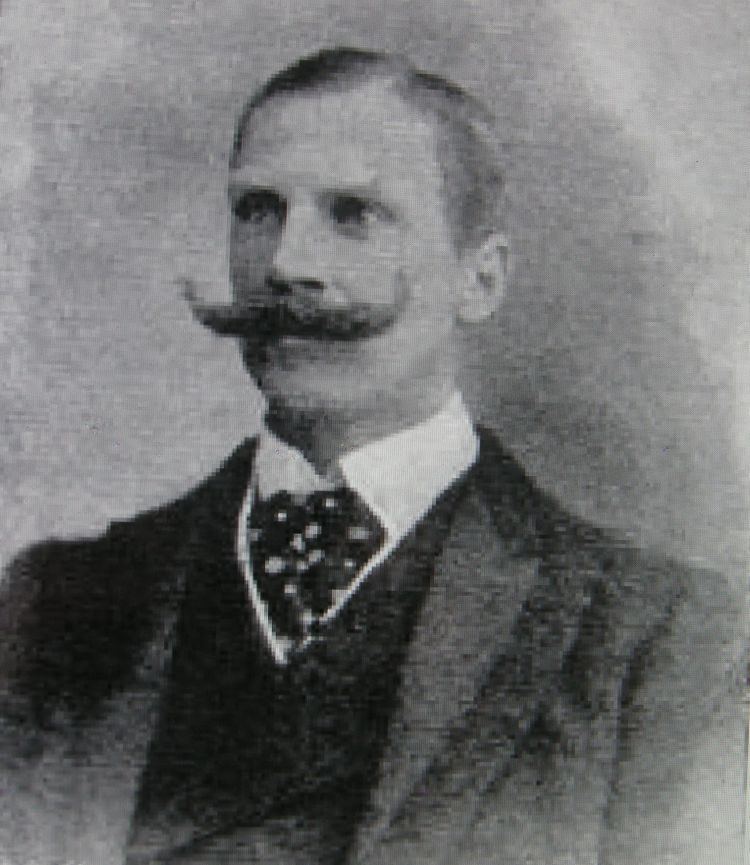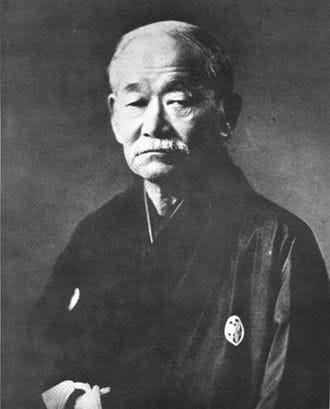By Lemar Morgan | 16 November 2018
The English are known for many things but martial arts aren’t one of them. However, there is evidence to support the notion that MMA was the invention of an eminent English engineer's son.
Typically, the English brought a sense of gentlemanly Edwardian etiquette to fighting, and in March 1899, Pearson's magazine published an article by Edward William Barton-Wright entitled "The New Art of Self-Defence".
A Trip to Japan Inspired an English Gentleman’s MMA
The Edward William Barton-Wright Story began on November the eighth, 1860, in Bangalore, India. He was born to a mother of Scottish heritage and an English father, who was most likely seconded to India during a period of British rule by the East India railway company.

Source: alchetron.com
Invariably, his father's engineering prominence heavily influenced Edward's career path. Returning to England in the 1880's, he opted to be educated in France and Germany. After graduation, he started work as a railway clerk and later as a civil engineer and surveyor, which gave him the opportunity to travel extensively throughout Asia and Europe. Professing to have a lifelong interest in martial arts, Edward arrived in Kobe, Japan between 1895-1898, where he was introduced to Jujitsu.
During his time there, he studied at two different schools (ryu) with their own distinct fighting style characteristics and philosophies. It was here under the tutelage of sensei Terajima Kuniichiro in Kobe, and Kano Jigoro Shihan in Tokyo, where the rudimentary principles of Bartitsu were beginning to form.
A Gentle Way's Influence on Bartitsu
It has to be assumed that Kano Jigoro Shihan, the originator of judo (gentle way), triggered the inspiration in Barton-Wright's thinking regarding martial arts in general, and certainly influenced the development of his Gentlemanly art of self-defence. The humble beginnings of Kano's school and dojo started out on the site of a Buddhist temple in February 1882, and in 1884, it was renamed Kodokan – the spiritual home of Judo.

Source: Wikipedia
Barton-Wright, a dedicated jujitsu student for some years, felt that there were some philosophical insufficiencies and technical inadequacies in the concepts that he had learned.
His instinct was to pursue his own style to overcome what he considered the shortcomings to be. Cultural 1890s Japan whole-heartedly believed in self-improvement for the betterment of society, and by all accounts, this fundamental philosophical element resonated with Barton-Wright too.
The Englishman's enlightenment in Japan is said to be responsible for one of the defining periods of his life. Despite the vastly different cultural heritages, Barton-Wright, by and large, shared a similar martial arts ideology to the Japanese – a physical, psychological and moral pedagogy. Meanwhile, in total contrast to his rather tranquil life in Tokyo, the disorderly streets of London awaited a young high-spirited martial artist's return.
News of the Les Apaches Drove Fear Into Londoners
In 1899, the Bartitsu Academy of Arms and Physical Culture opened its doors to the general public in Soho, London. The academy enjoyed a piece of coincidental luck or fortuitous timing as the newspapers were full of horrifying stories of street violence and muggings at the exact moment Barton-Wright launched his self-defence classes.

Source: YouTube
Further cause for alarm for respectable Londoners came from various international news-feed sources, describing atrocities committed by the Les Apaches in Montmartre, Paris, and as if that wasn't enough, stories of terrifyingly violent New York gangland disputes in the US hit the headlines.
A bit closer to home, reports of notorious street hooligans and criminals that were operating all over central London on a daily basis had the population living in fear.
Needless to say, Barton-Wright was able to take full advantage of this situation, and unsurprisingly, the gentlemanly art of self-defence became immensely popular.
Read All About It in 1899 – "The New Art of Self Defence" or MMA is Born
Principally, Bartitsu is a combined fighting system, specifically created by Barton-Wright with urban combat in mind. Particular attention was given to the environmental conditions under which a street fight took place. Barton-Wright's belief was that one fighting skill alone simply wasn't enough to overcome all the situations a gentleman could find himself in. Arguably, Bartitsu was primarily based on Jujitsu.
However, considering that the majority of English gentlemen in the late eighteenth and early nineteenth century carried walking sticks of some kind or umbrellas, the initial emphasis was placed upon French Vigny stick fighting, which included several striking and blocking techniques along with throws and defensive guards. Barton-Wright used his own experiences in martial arts to realise his own vision of self-defence.
Along with stick fighting he utilised Savate and boxing for fighting at close quarters, as well as Jujitsu and Judo to cover any other eventualities. Distraction tactics also became an interesting part of his training sessions where his students were encouraged to improvise, using cloaks and hats or whatever they had with them.
In Edward William Barton-Wright's own words, the principles of Bartitsu are:
- 1To disturb the equilibrium of your assailant
- 2To surprise him before he has time to regain his balance and use his strength
- 3Subject the joints of any part of his body, whether neck, shoulder, elbow, wrist, back, knee, ankle, etc. to strain which they are anatomically and mechanically unable to resist
A Legacy That Predates Bruce Lee By 40 Years
Whilst Bartitsu practitioners have all but disappeared, the story demonstrates the overwhelming lure a martial arts lifestyle can have on us. The revivalists are doing an incredible job of keeping the spirit of Bartitsu alive but from a totally nostalgic point of view, it's a pretty good representation of a martial artist's journey of discovery.
For most – including Bruce Lee – realising that mastering one discipline isn't enough is a natural progression, and paying tribute to the ancestors is an essential ingredient of becoming a complete martial artist too. All in all, there is a very strong case indeed to support the idea that modern MMA was started in London in 1899 by Edward William Barton-Wright.
